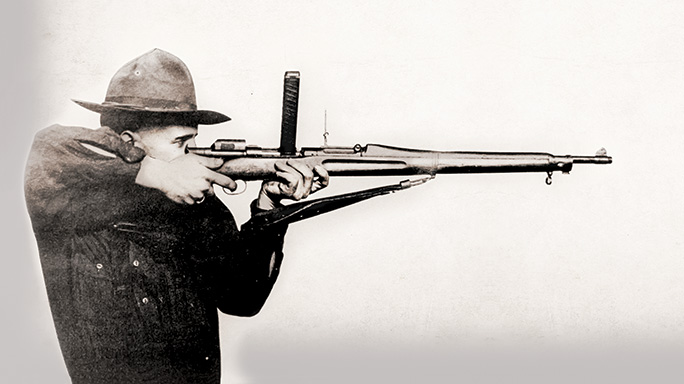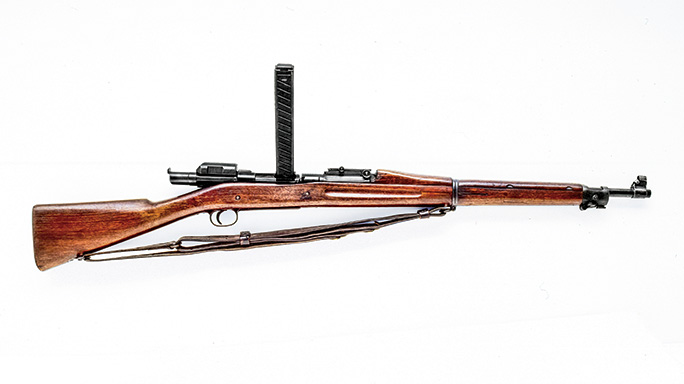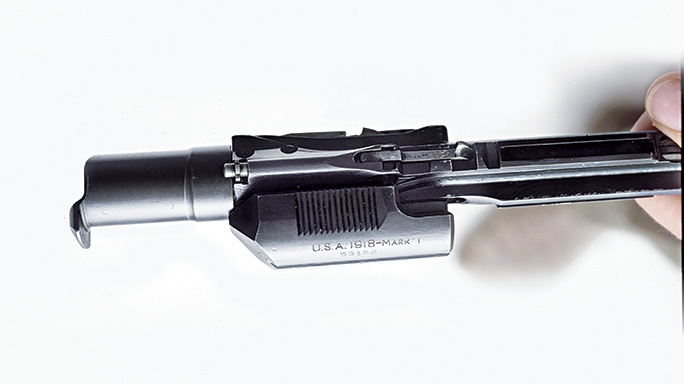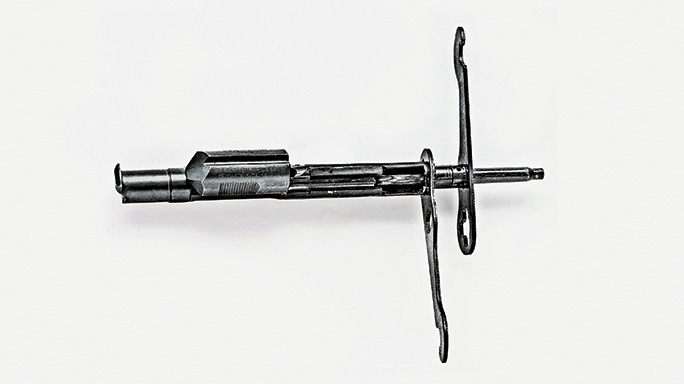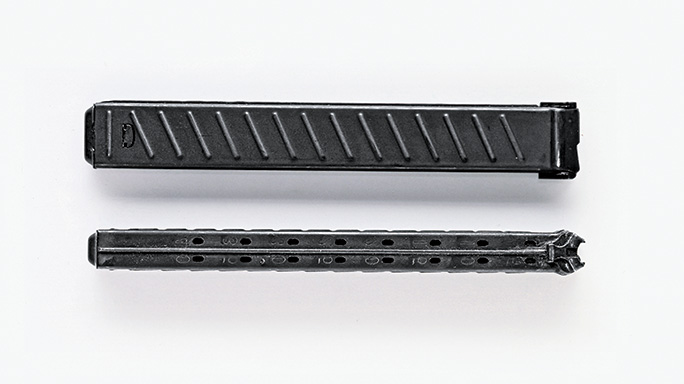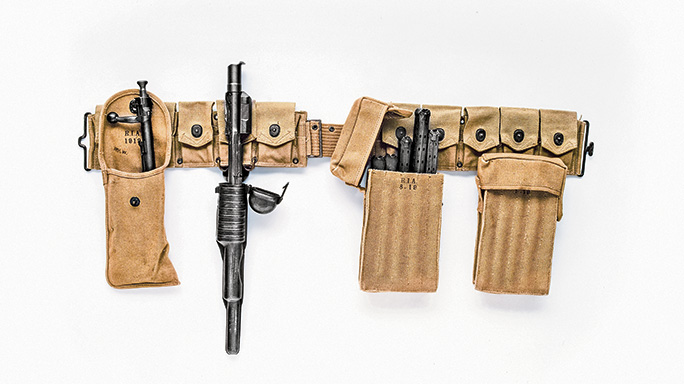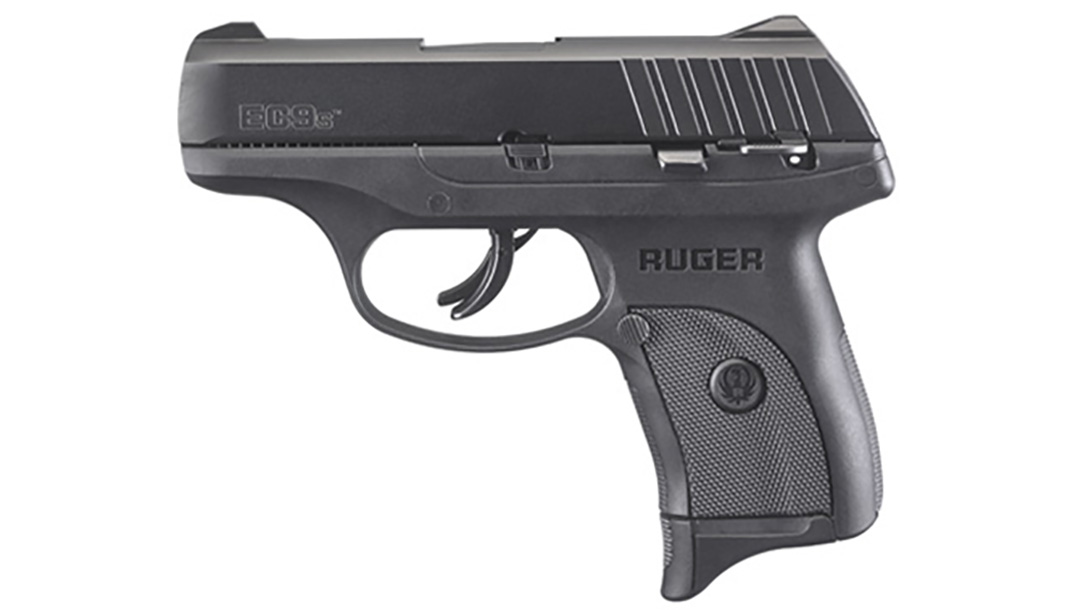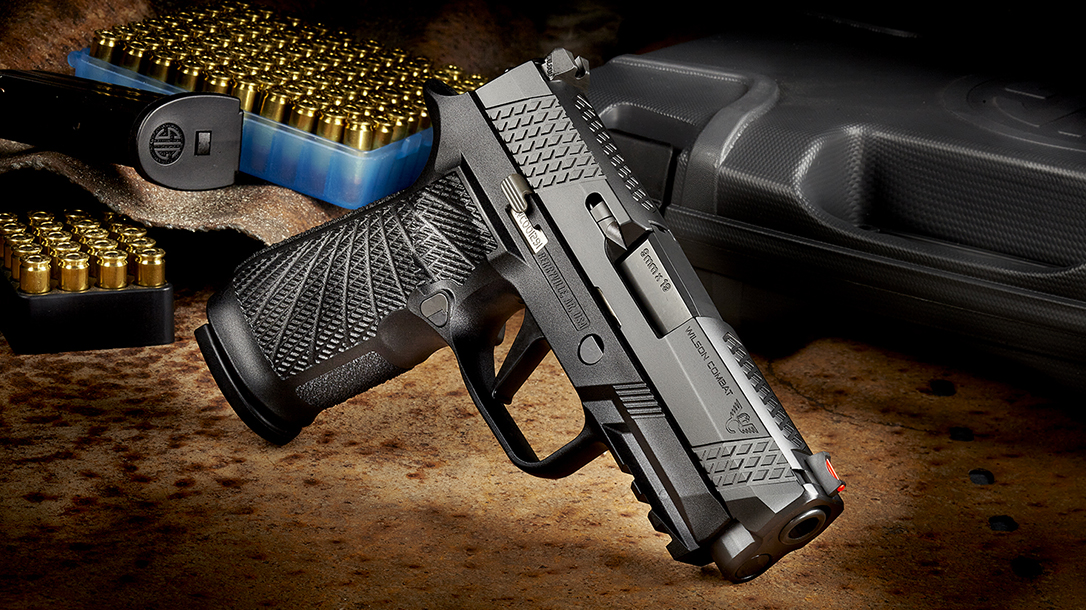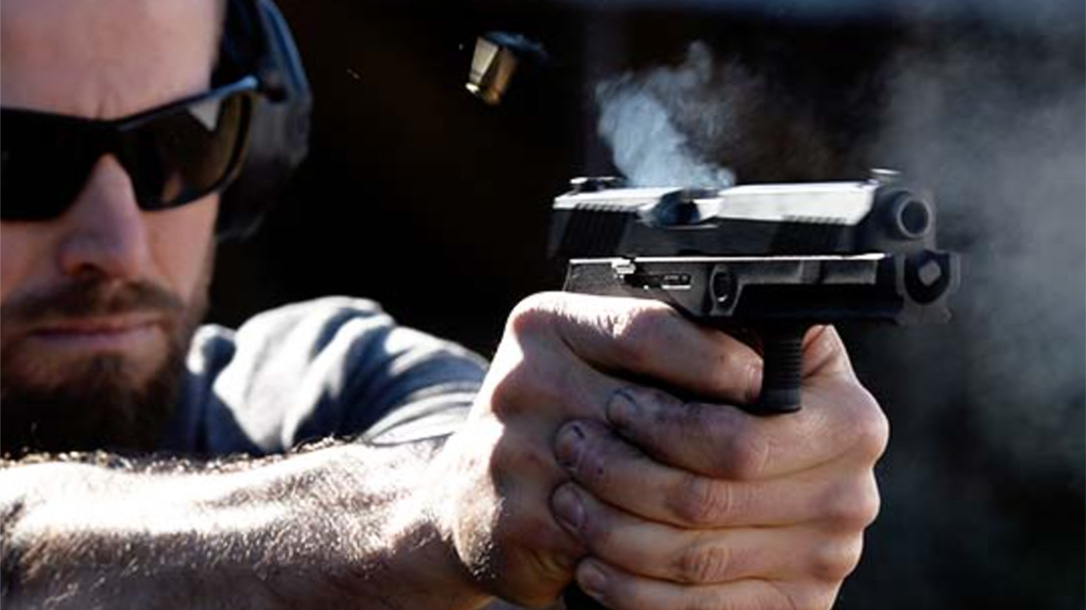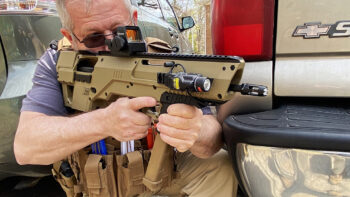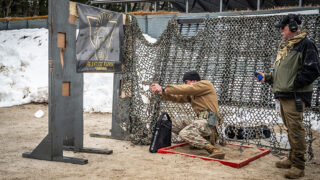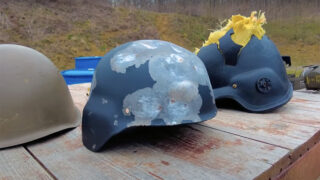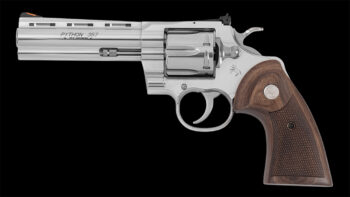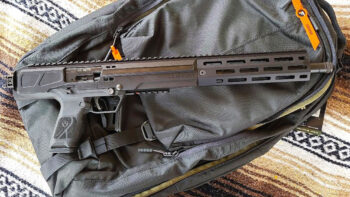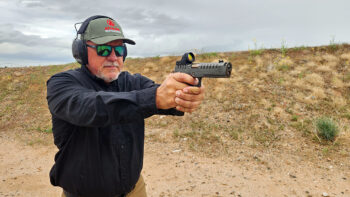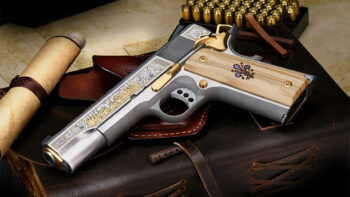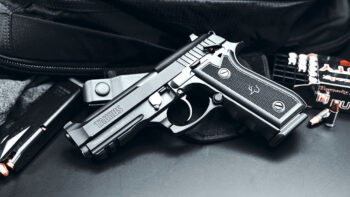World War I was an epochal period in the history of warfare when 18th century infantry tactics went head-to-head against 20th century weapons technology. The results were predictable and gruesome. Tens of thousands of lives were wasted in futile and foolish headlong assaults against fortified trench positions protected by the devastating firepower of water-cooled, belt-fed machine guns.
The carnage inflicted on both sides since the war began in 1914 was, in large measure, responsible for the strong isolationist sentiment in the United States. The American public was in no mood to send our young men to be slaughtered in the trenches of France on behalf of our European allies. As events transpired, however, the United States eventually declared war against the Central Powers in April of 1917, and the nation rapidly mobilized for the conflict.
At the time, the small pre-war American Army, Marine Corps and Navy were equipped with Model 1903 rifles. However, the declaration of war meant large numbers of additional weapons would be needed in a hurry. This resulted in greatly increased production of the ’03 rifle at Springfield Armory and Rock Island Arsenal. A slightly modified version of the British Pattern 1914 rifle was also adopted as the Model of 1917 and issued, along with ’03s, to troops departing for France.
Frontline Solution
The bolt-action M1903 and M1917 rifles proved to be at least equal to the other contemporary infantry rifles, but all had two apparent drawbacks. The bolt action was not conducive to rapid firing and the typical service cartridge, such as the .30 Springfield (.30-06), was overly powerful for some applications. This was discussed in an Army Ordnance magazine article of the period:
“It may seem at first glance that the military rifle cartridge is unduly powerful but it must be remembered that…these same bullets are used by machine guns for laying out barrages at long distances or for shooting at high flying aircraft.
Thus a soldier in firing his army rifle is frequently in a situation where he has more power in his bullets than he needs for the particular job in hand; moreover, for each shot he must open the bolt of his gun and throw out the empty cartridge and then close the bolt and lock it before he can shoot another shot…”
In other words, there were times when a soldier did not need a full-power cartridge but, at other times, such ammunition was indispensible. Also, a self-loading (semi-automatic) service rifle would be extremely valuable, but there were no satisfactory military semi-automatic rifle designs on the horizon. Finding a solution to these two rather contradictory issues would seem to be unlikely. However, the problem was addressed by one of the most famous firearms designers of the period, John D. Pedersen.
By the first decade of the new century, with the exception of the legendary John M. Browning, Pedersen’s reputation as a gun designer and engineer was second to none. While affiliated with Remington Arms Company, Pedersen also designed several successful guns, including the Model 51 pistol, the Model 10 slide-action shotgun and an advanced experimental .45-caliber pistol. In the early 1920s, Pedersen designed a semi-automatic rifle that presented a strong challenge to the semi-automatic rifle invented by John C. Garand.
Rapid Fire
In the summer of 1917, Pedersen contacted the U.S. Army Ordnance Department and requested a secret demonstration of his latest invention. Even though the Ordnance people had no idea as to the nature of his invention, Pedersen’s reputation was such that the rather unusual request was granted. On October 8, 1917, after being sworn to secrecy, a small contingent of Army officers, including Chief of Ordnance General William Crozier and a few congressmen, gathered at the Congress Heights Rifle Range near Washington, D.C. An Army Ordnance article described the event:
“Mr. Pedersen started his demonstration by firing the Springfield rifle which he brought with him. After firing a few shots in the ordinary way he suddenly jerked the bolt out of the rifle and dropped it into a pouch which he had with him, and from a long scabbard which was on his belt he produced a mysterious looking piece of mechanism which he quickly slid into the rifle in place of the bolt, locking the device to the rifle by turning a catch provided for the purpose.
“Then he snapped into place a long black magazine containing forty small pistol size cartridges whose bullets were, however, of the right diameter to fit the barrel of the rifle. All of this was done in an instant and in another instant Mr. Pedersen was pulling the trigger of the rifle each time as fast as he could work his finger and each time he pulled the trigger the rifle fired a shot, threw out the empty cartridge and reloaded itself.”
The assembled spectators were astonished by what they had witnessed and the device was eagerly examined. The mechanism, now known as the Pedersen Device, was referred to as an “automatic bolt.” It functioned in basically the same manner as a blowback pistol. The “barrel” of the device was the same configuration as a .30-06 cartridge case and had shallow rifling. It locked into place by a slightly modified magazine cut-off. A small projection on the trigger moved forward each time it was pulled to actuate the device’s sear.
The 40-round magazine snapped into the right side of the device at about a 45-degree angle, and was held in place by two spring-loaded catches. The offset location of the magazine permitted the rifle to be sighted normally, and the fired cartridge cases were ejected through an elongated, oval-shaped hole milled into the left side of the rifle’s receiver. The device was carried in a sheet-metal scabbard with a hinged cover. A canvas pouch was fabricated to hold the rifle’s bolt when removed for insertion of the Pedersen Device. Five magazines were carried in a canvas pouch. The scabbard and pouches were all fitted with hooks for use with the standard infantry cartridge belt.
The Pedersen Device’s .30-caliber cartridge was very similar to the Colt .32 ACP pistol round but it had a muzzle velocity of approximately 1,300 fps, almost 50-percent higher than pistol cartridges of comparable size.
Top Secret
It didn’t take long for the Army officers who witnessed the demonstration to grasp the potential defensive and offensive benefits of the device for the trench warfare currently raging in France. As one imaginative observer commented:
“As the enemy came charging across No Man’s Land each of our soldiers would start firing with this miniature machine gun and the entire zone in front of the trenches would be covered with such a whirlwind of fire that no attack could survive…
“A line of soldiers advancing across No Man’s Land firing this device at the enemy trenches as they ran would make it extremely difficult for anyone in the trenches to show his head or any part of his body. Of course, fire while running or walking would not be so accurate, but the tremendous number of shots would more than make up for any inaccuracies and the whole enemy trench system would presumably be smothered with a storm of bullets.”
After the impressive demonstration in Washington, an Ordnance Department officer, also sworn to secrecy, was dispatched to France to deliver an example of the Pedersen Device to General Pershing. On December 9, 1917, the device was tested at Langres, France, under the supervision of a select board of four high-ranking American Expeditionary Forces officers. After testing, the board recommended that 100,000 Pedersen Devices be procured and plans were made to go into mass production.
The recommended allocation of ammunition for each device was 5,000 rounds with a daily resupply of 100 rounds. The board stressed that the element of surprise would be an important factor and recommended than none of the devices be issued until at least 50,000 were on hand and ready for use. These recommendations were conveyed to the chief of ordnance in Washington via a cablegram sent on December 11, 1917.
In order to maintain the desired secrecy, the device was given the purposely misleading nomenclature of “Automatic Pistol, Caliber .30, Model 1918, Mark I.” It has been reported that the War Department received criticism from various quarters for adoption of another pistol when the tried and true Colt M1911 .45 was already in production. Presumably the Ordnance Department was pleased that their ruse seemed to be working so well.
Into The Trenches
The War Department concurred with the board’s recommendation and an initial order for 100,000 Pedersen Devices was placed with Remington Arms Company on March 26, 1918, and another 33,450 were added to the contract shortly afterward. On May 24, 1918, 800 million Pedersen Device cartridges were also ordered
from Remington.
While Remington was tooling up to manufacture the Pedersen Devices, Springfield Armory was working on the modifications necessary to the M1903 rifle to enable it to be used with the new device. These modifications included having the ejection port milled into the left side of the receiver (with a shallow clearance cut on the stock) along with a modified magazine cut-off, trigger and sear. The new rifle was designated as the “U.S. Rifle, Caliber .30, Model of 1903, Mark I.” The first Mark I ’03 rifle, serial number 1,034,503, was completed at Springfield in November 1918.
While Remington was busily engaged in manufacturing the devices, the War Department was already planning on the best way to employ the envisioned revolutionary weapon. A “Grand Offensive” was slated for the spring of 1919 and it was believed that the Pedersen Device would play an important role in the campaign. It was eventually realized that M1903 Mark I rifle production may not be sufficient to provide enough rifles, and on June 27, 1918, Mr. Pedersen was requested to develop a version of his device for use with the Model 1917 rifle.
The new device was designated as the “Mark II” and a working example was demonstrated to the Ordnance Department on August 10, 1918. On September 20, 1918, Remington was directed to proceed with plans to manufacture 500,000 Mark II Pedersen Devices after the original Mark I contract was completed. Interestingly, at least one prototype Pedersen Device was fabricated for the Russian Mosin-Nagant rifle but any pending plans to put a Pedersen Device for that weapon into production was quashed when the czar was deposed.
At the time of the Armistice on November 11, 1918, production of the Mark I Pedersen Devices and Mark I M1903 rifles was well underway but the contract for the Mark II devices was cancelled on December 17, 1918. Only a handful (probably less than a half dozen) Mark II prototypes had been made. Remington continued with production of the Mark I devices until the contract was also cancelled on March 1, 1919. By this time, about 65,000 Pedersen Devices had been manufactured, along with 1,600,000 magazines and 65,000,000 cartridges. Springfield Armory continued production of the Mark I M1903 rifle until March 1920, by which time approximately 145,000 rifles had been manufactured.
Late Arrival
At the conclusion of the war, the U.S. Army had its Pedersen Devices and Mark I M1903 rifles but no one was quite sure what to do with them. The War Department appointed a board to determine the Army’s policy regarding these devices and to ascertain what role, if any, these weapons would play in the post-WWI period. Even at this time, all personnel involved were sworn to secrecy. Various tests conducted in late 1919 and early 1920 all arrived at the same conclusion: Future use of the Pedersen Device was unlikely.
The devices were placed in storage pending a decision as to their final
disposition. These Pedersen Devices, metal scabbards and ammunition remained in storage until April 1931, when the items were ordered to be destroyed since they were deemed to have no future applications and were judged not worth the expense of continued storage. The ordnance depots at which they were stored were directed to burn the devices and metal scabbards and the remaining residue was to be sold as scrap metal. The ammunition was also ordered to be destroyed.
Beginning in 1937, the Model 1903 Mark I rifles began to be recalled to Springfield Armory so the special Pedersen Device-related parts could be removed and replaced with standard components. Afterward, the rifles were reissued as standard service arms. Very few Pedersen Devices survived the destruction directive. A few were given to government museums and, as might be expected, some were “unofficially” salvaged from the fringes of the bonfires. Some of these latter examples will show evidence of having been burned to varying degrees.
The exact number of extant Pedersen Devices is not known but a rough estimate would be two to three dozen. These range in condition from pristine to rusted-out hulks. The magazines are about as rare as the devices and the metal scabbards are even rarer. The canvas pouches for the magazines and bolts were not destroyed and examples are still relatively common today. Rumors have abounded for years about replica Pedersen Devices coming on the market but there are engineering and financial hurdles that make this unlikely.
It is fascinating to speculate how the Pedersen Device would have performed in the Allied Grand Offensive in the spring of 1919. The sight of thousands of Doughboys leaving their trenches and moving across “No Man’s Land” while firing their Pedersen Devices would undoubtedly have been quite a spectacle. But it was not to be. Instead, Mr. Pedersen’s remarkable invention suffered the ignominy of being dumped into funeral pyres and reduced to charred scrap metal. While the tactical value of the Pedersen Device can be debated, it remains one of the more ingenious and interesting, albeit unused, items of ordnance ever to be produced. It’s unfortunate it did not have an earlier chance to prove its value in battle.








